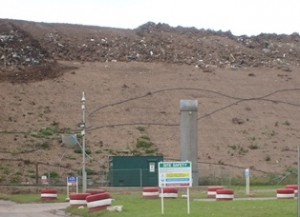Views sought on landfilled air pollution residues
Environment Agency seeking to develop best practice for disposing of or treating air pollution control residues from waste incinerators
The Environment Agency is seeking views and information on the production and management of air pollution control residues from incinerators and hazardous waste treatment plants.
According to the Agency, air pollution control residues — which contain elements such as lead and chromium — tend to be produced by efficient emission control systems delivering a ‘high level of environmental protection’ at incinerators and similar plants.

The Environment Agency is seeking views on the management of air pollution control residues, which are often produced at waste incinerators and disposed of at landfill sites
These residues are often disposed of at landfill sites under waste acceptance criteria (WAC), but the Agency is working with industry to recover and reuse all solid wastes from these plants and expects disposal of these wastes to reduce as the industry develops new treatment technologies.
As such, the Agency is seeking to develop a Best Overall Environmental Outcome (BOEO) approach to the management of air pollution control residues and is seeking views and information on the production, handling, recovery and disposal of these wastes.
The information is being sought as part of the Agency’s consultation — which opened on Friday (January 14) on plans to remove the current 3 x waste acceptance criteria (3 x WAC) derogations from permits for landfill sites for hazardous waste.
Waste Acceptance Criteria
Under EU rules on hazardous waste, there are acceptance criteria for hazardous waste going to landfill. But, for a number of years, the Agency has been allowing wastes which exceed the WAC by up to three times (3 x WAC) to go to landfill due to a shortage of alternative outlets.
Currently, there are eight landfill sites in the England that hold 3 x WAC derogations through which around 100,000 tonnes of waste is disposed each year — largely made up of air pollution control residues.
The derogations were agreed to allow the site operators to develop treatment or better disposal routes, but the Agency believes the point is nearing where ‘these derogations are no longer necessary’ and is therefore seeking to phase them out altogether.
The changes would mean the Agency only considering new 3x WAC derogations in ‘exceptional circumstances’ where landfill disposal is the best environmental option.
The Agency said its 2013 review showed that operators ‘do not use the majority’ of derogations and will remove derogations that are not required from landfill permits in ‘early 2014’. It will then also set an ‘expiry date’ of December 31 2015 for the remaining derogations.
The consultation states: “We expect there to be very few waste streams for which landfill is the only disposal option, and which cannot meet WAC limits. We will only consider new 3 x WAC derogations in exceptional circumstances, where applicants can demonstrate that no alternative treatment or disposal options exist and that landfill disposal is the best environmental option.
Responses to the consultation, which runs until April 18 2014, will be published before the end of July 2014, the Agency said.







 Network
Network